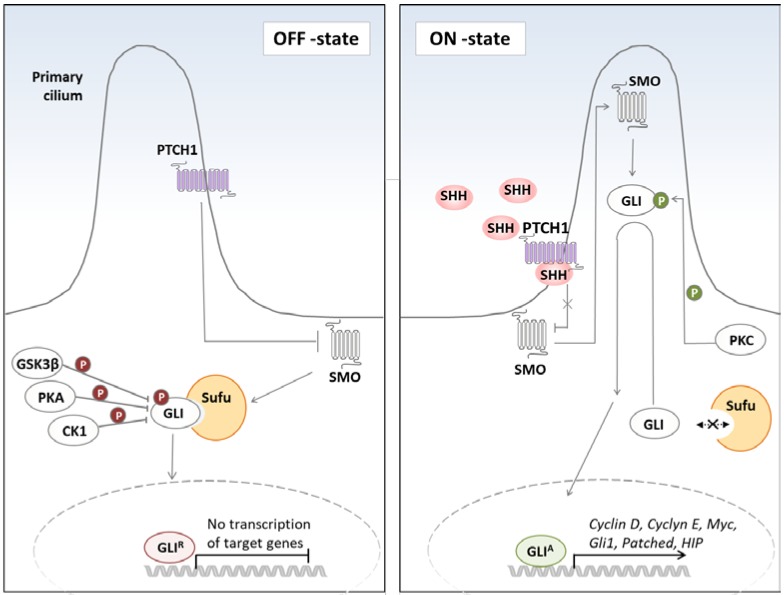Figure 1.
Mechanism of Hedgehog pathway activation. In the absence of the Hh ligand (left panel), PTCH1, which is found in the primary cilium, binds to SMO and prevents its transclocation into the cilium. This leads to the sequestration of GLIs in the cytoplasm, their association with the negative regulator SUFU, phosphorylation by GSK3β/PKA/CK1 kinases, and subsequent cleavage into repressor forms (GLIR). In the presence of the Hh ligand (right panel), SMO inhibition by PTCH1 is relieved, and SMO translocates to the primary cilium and prevents GLI2 and GLI3 cleavage. GLI proteins dissociate from SUFU, are phosphorylated by PKC, and converted into their active forms (GLIA), which then translocate to the nucleus and induce target genes expression. (Hh; hedgehog, PTCH1; Patched 1, SMO; Smoothened, GLI; gliomaassociated oncogene, GSK3β; glycogen synthase kinase 3β; PKA; protein kinase A, CK1; casein kinase 1, SUFU; Supressor of Fused, PKC; protein kinase C).

